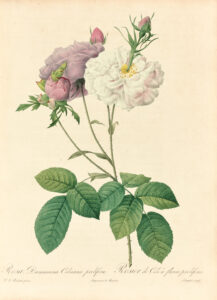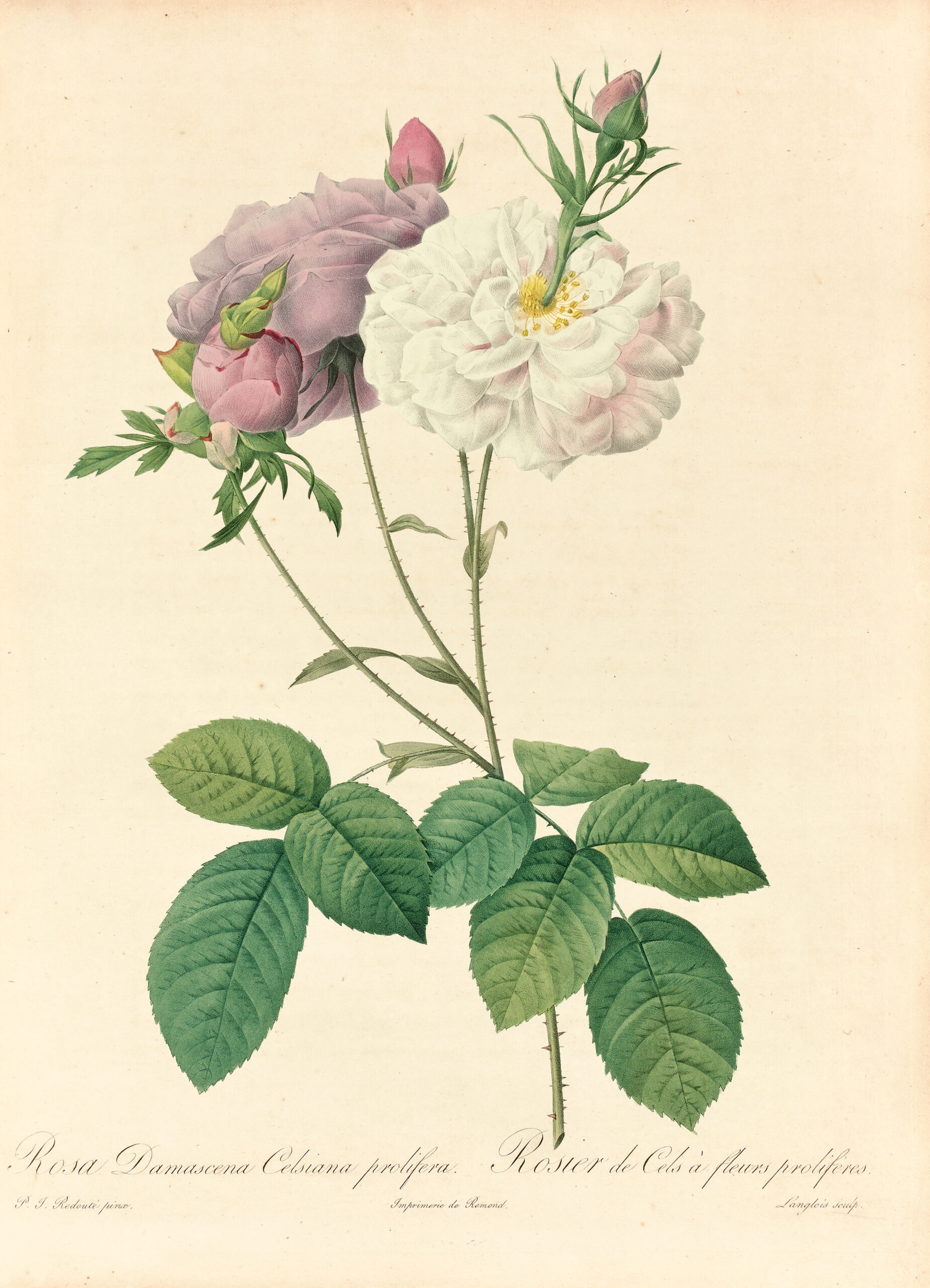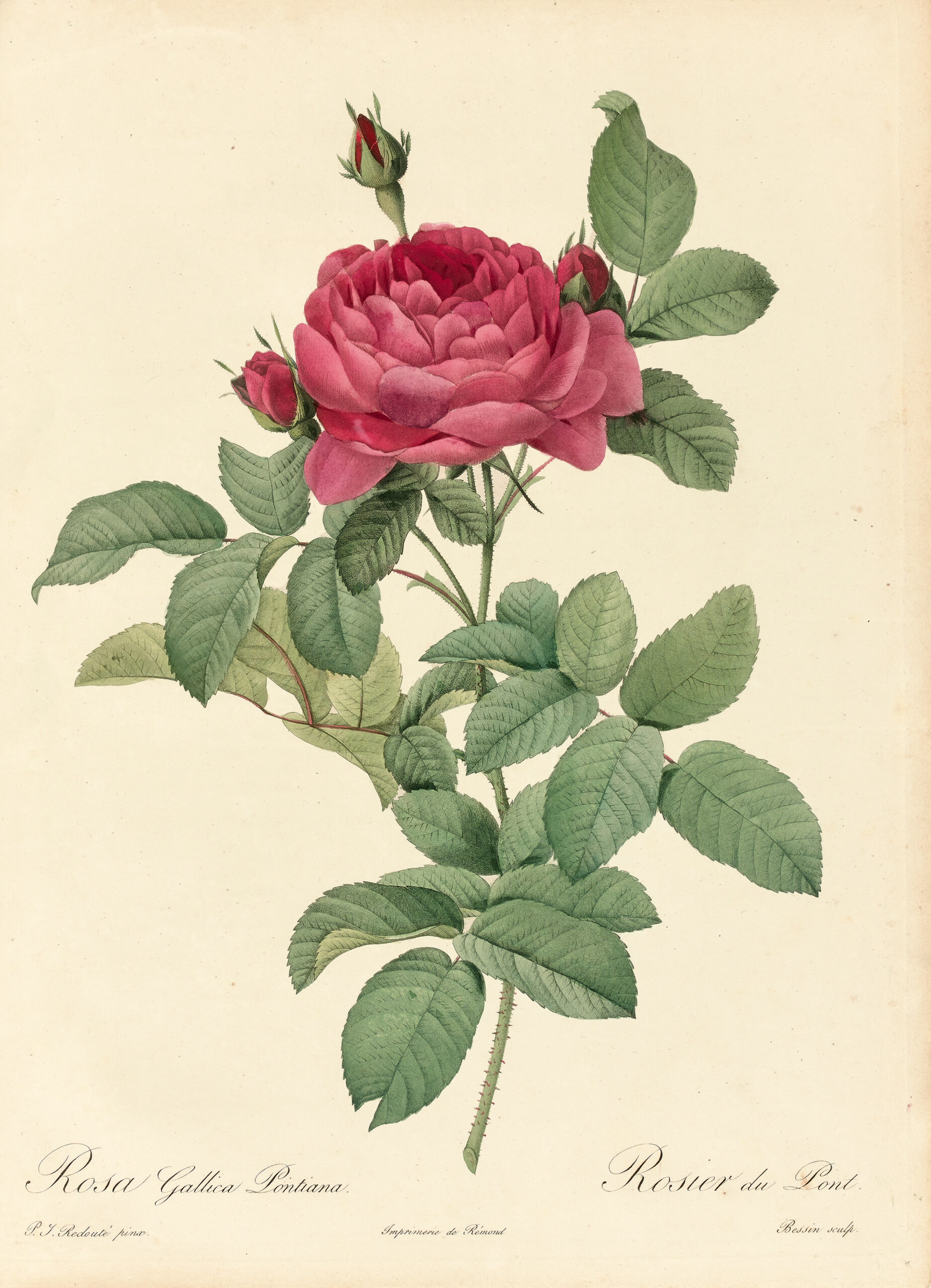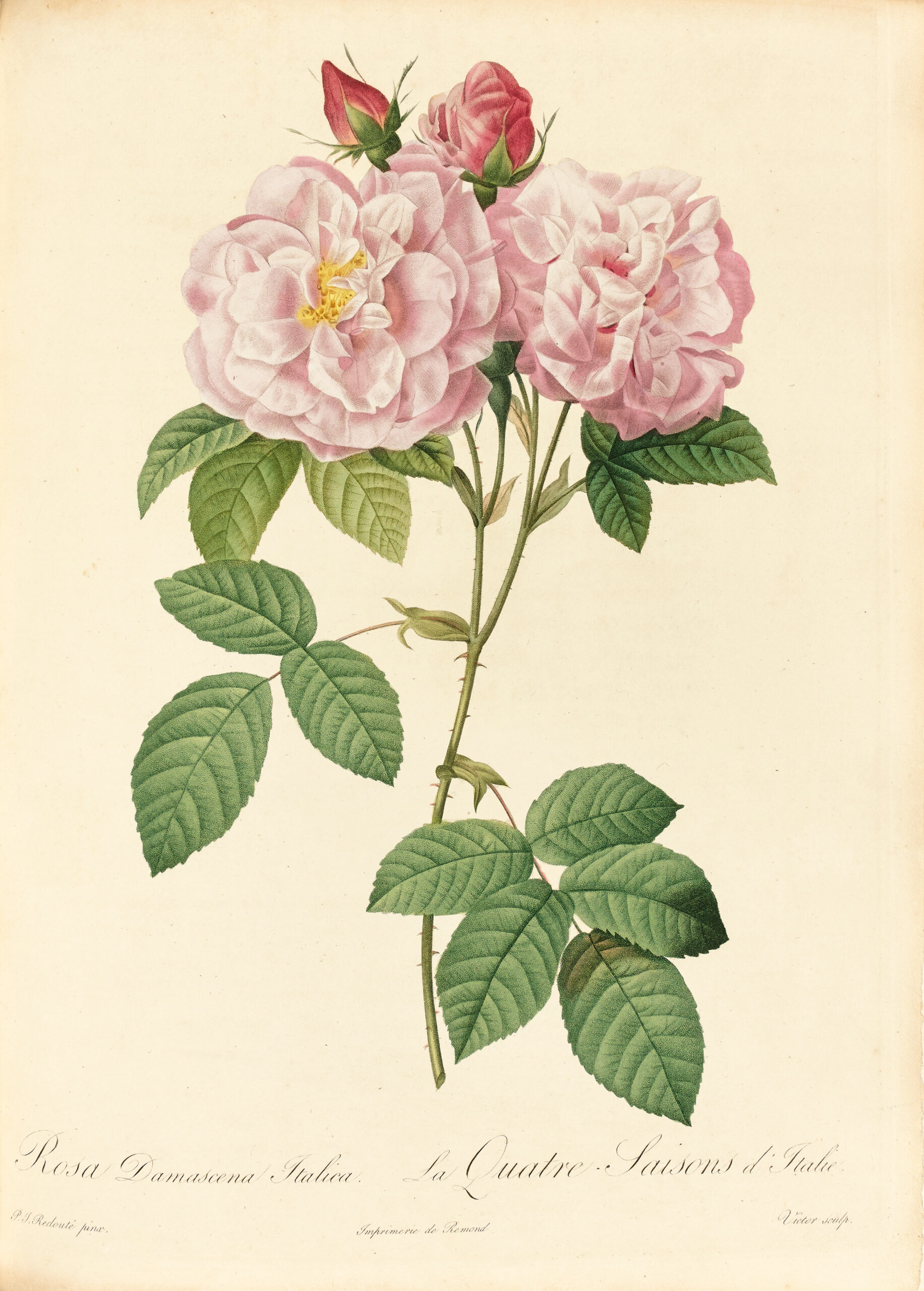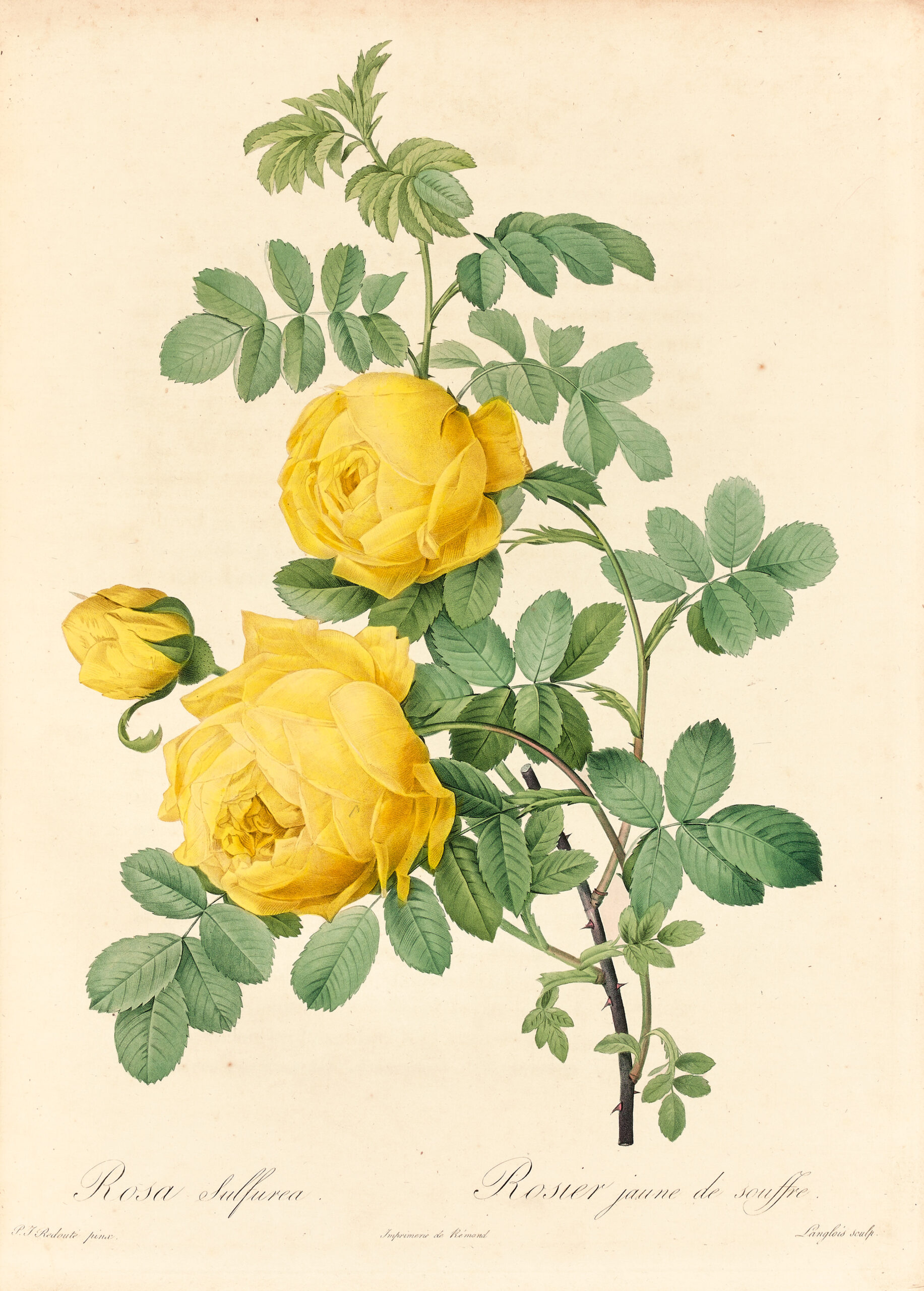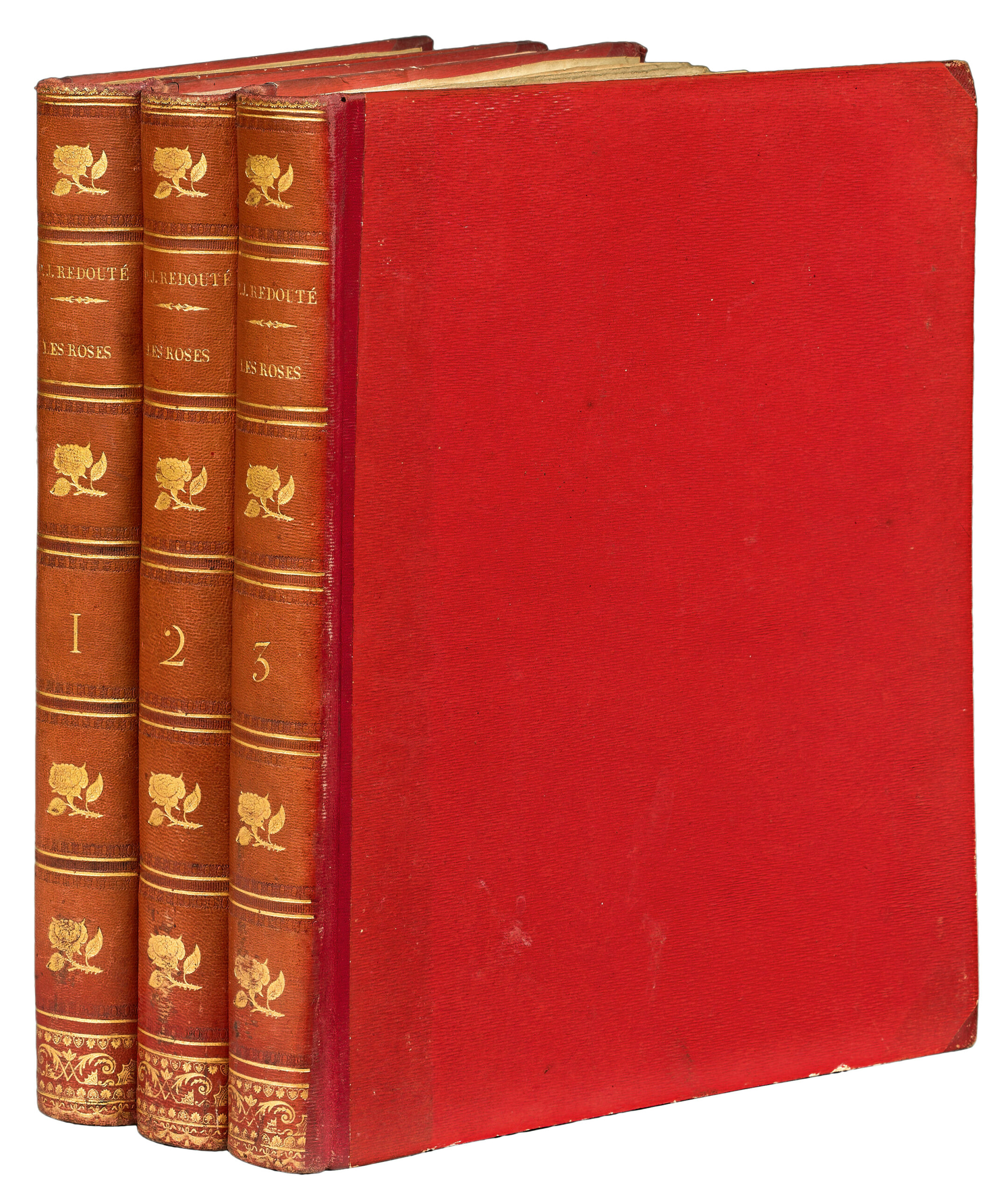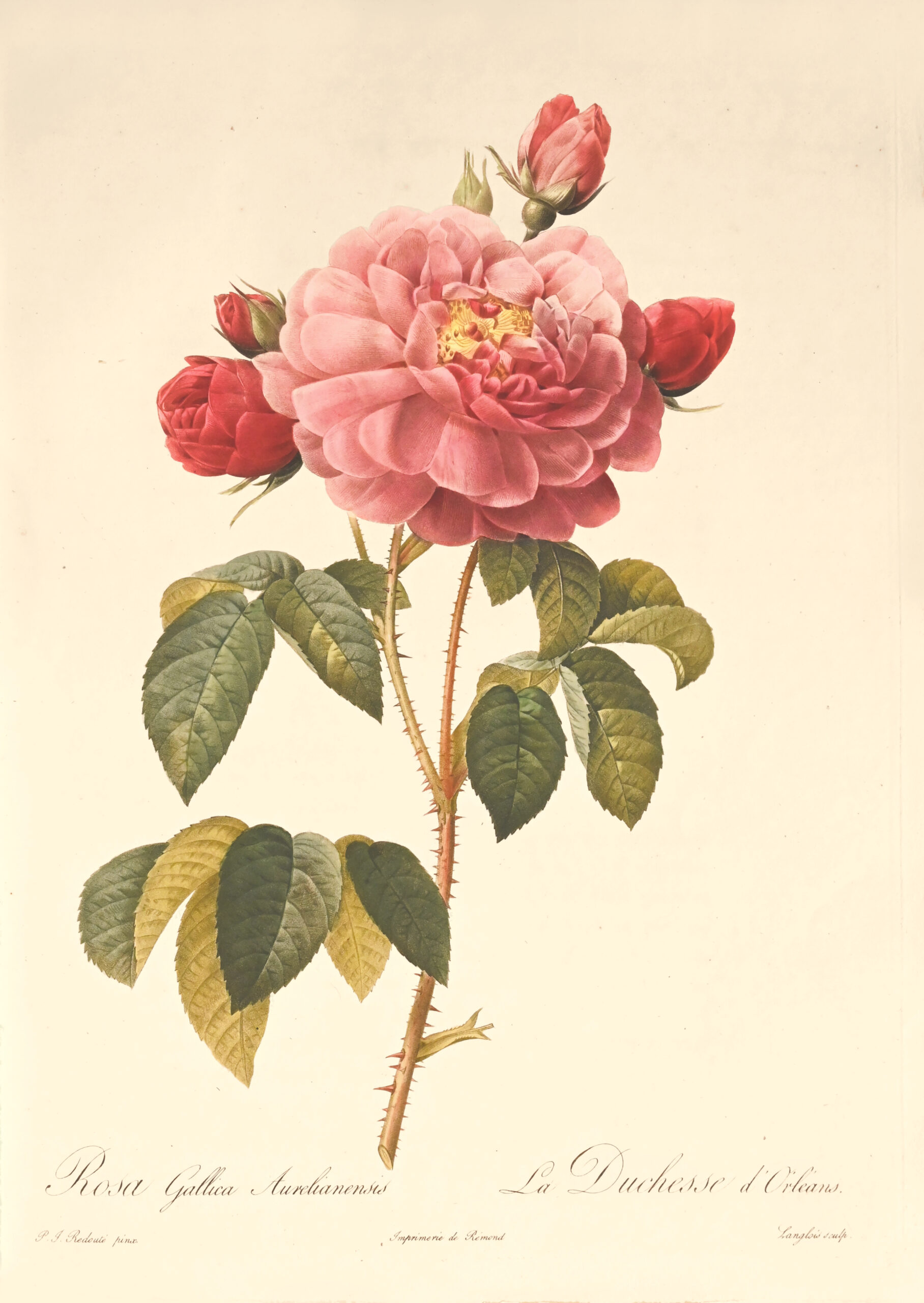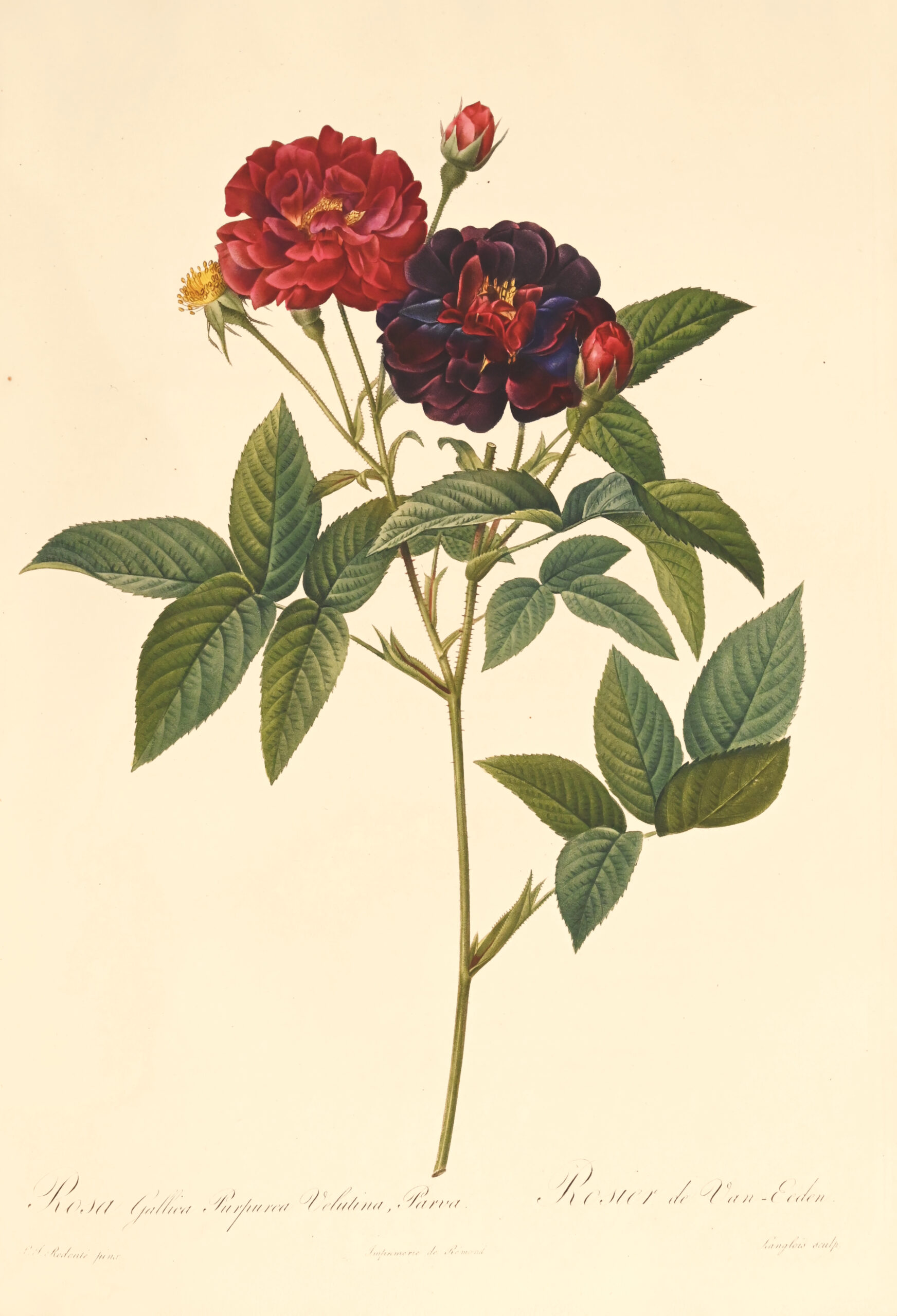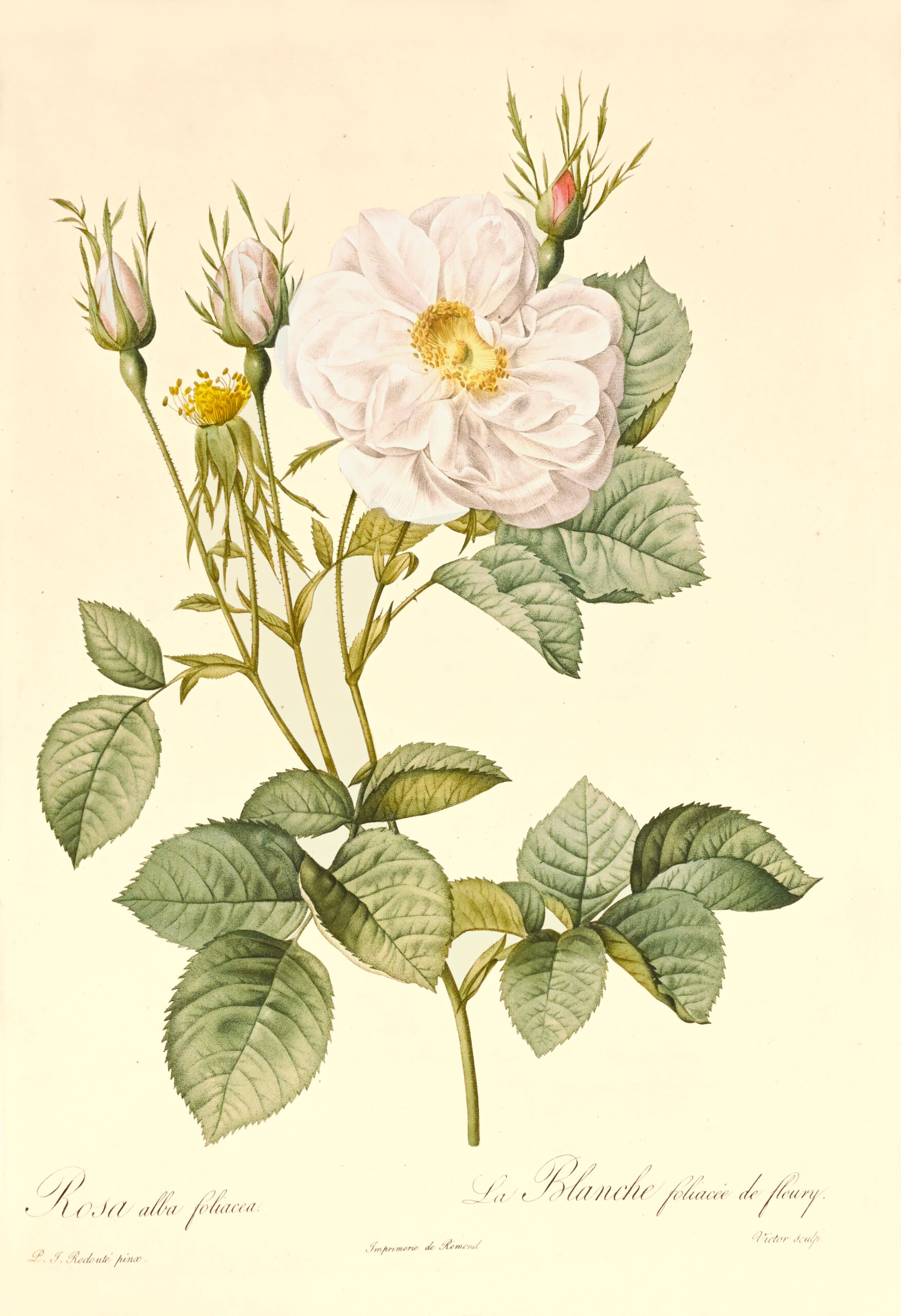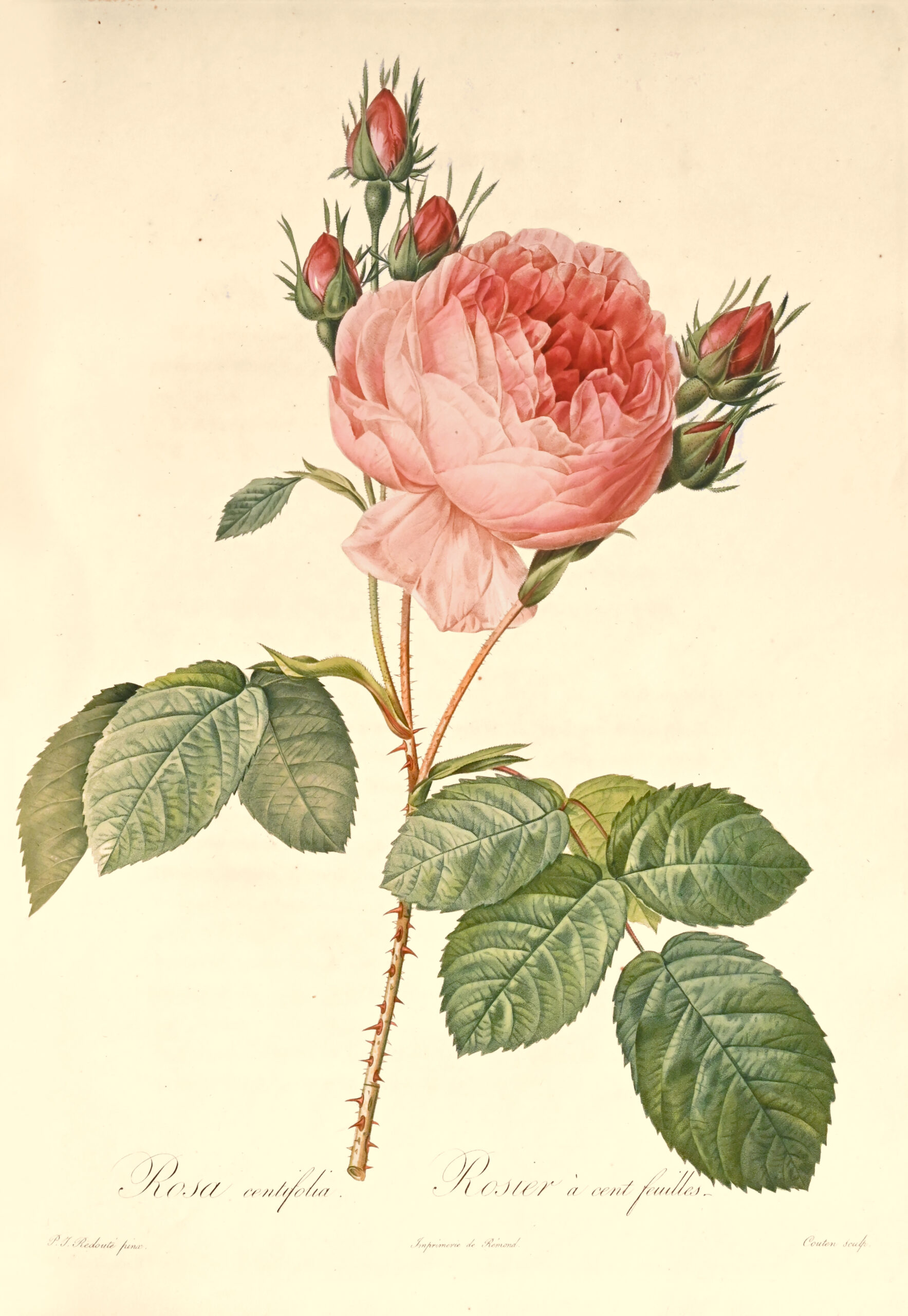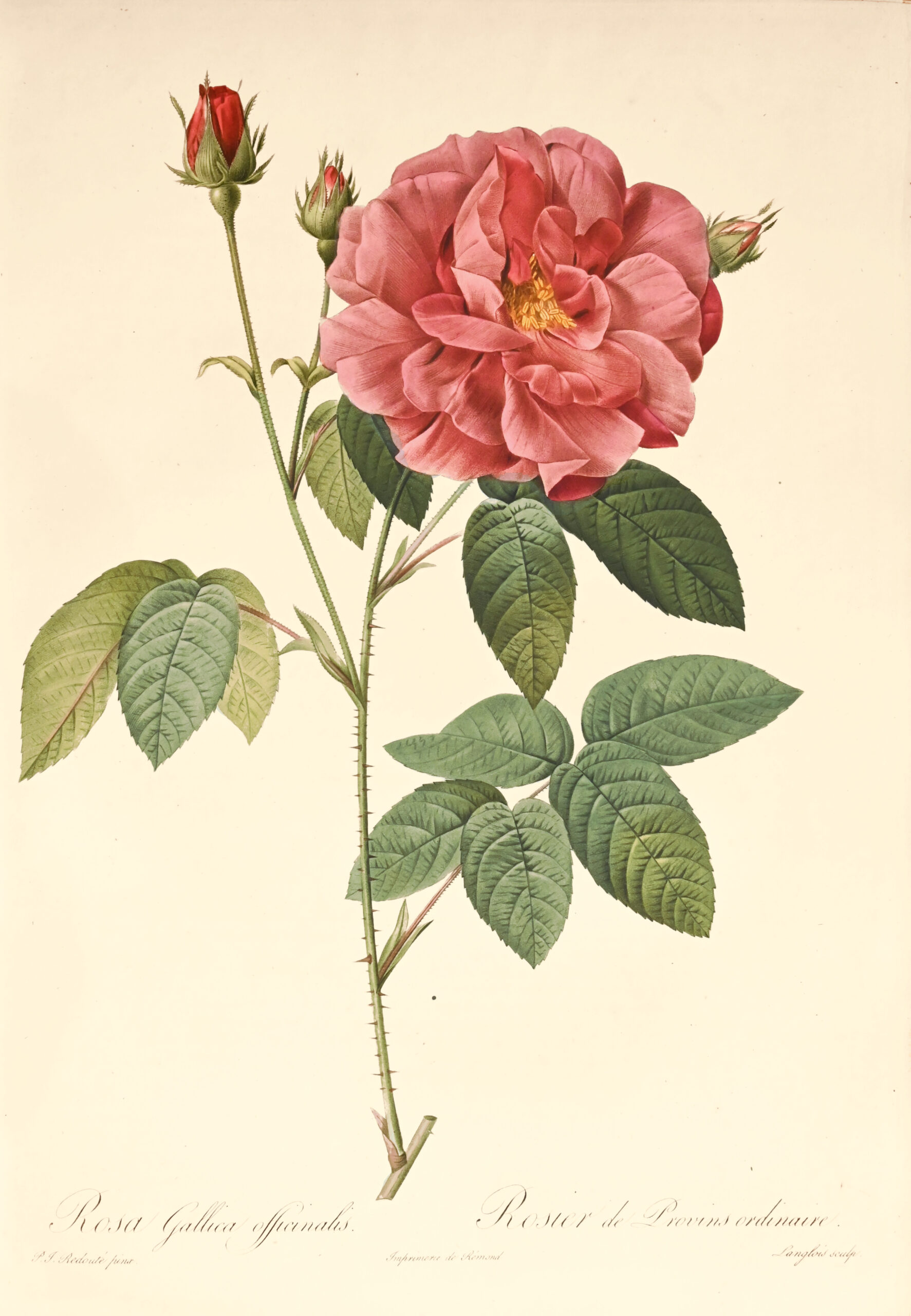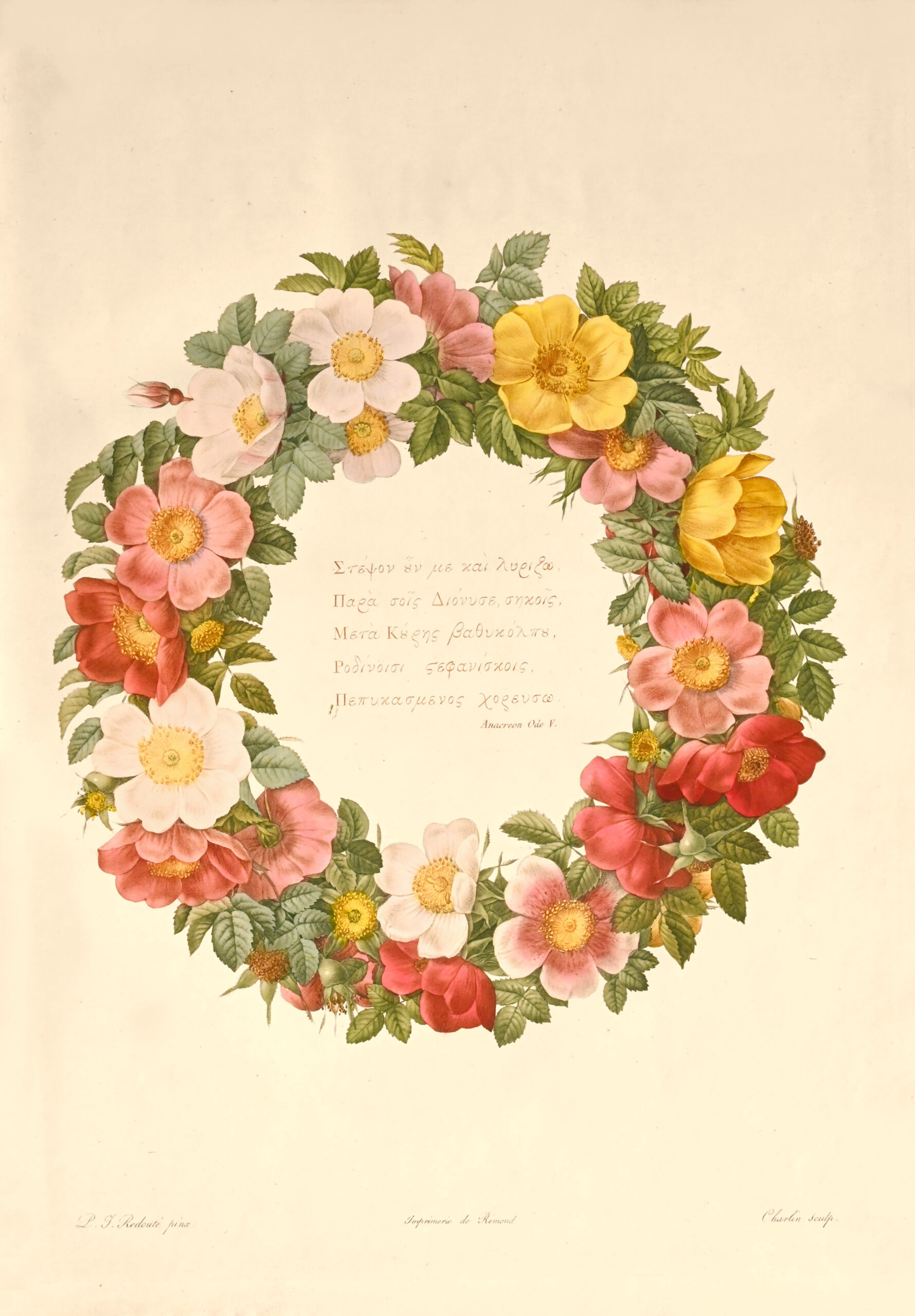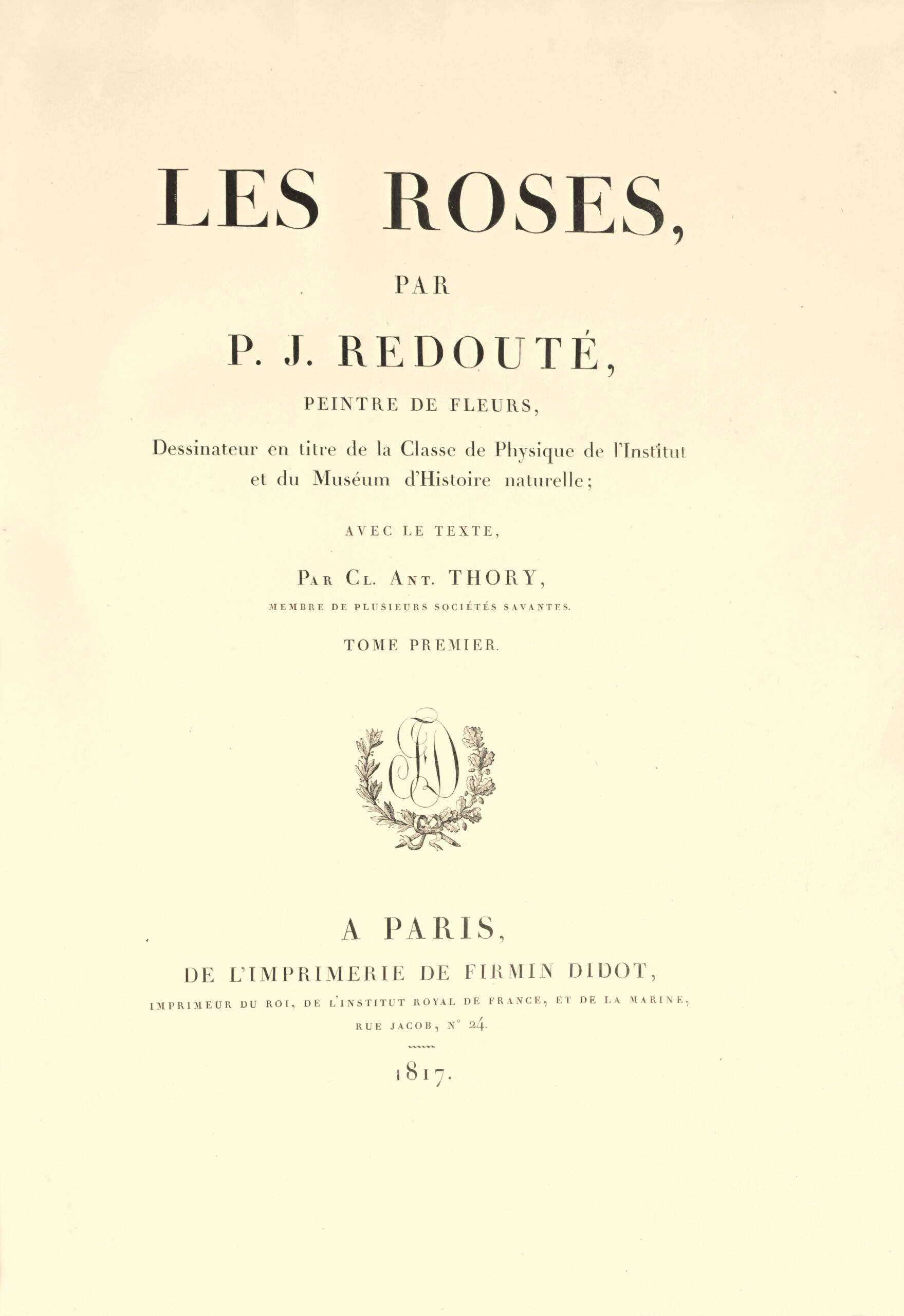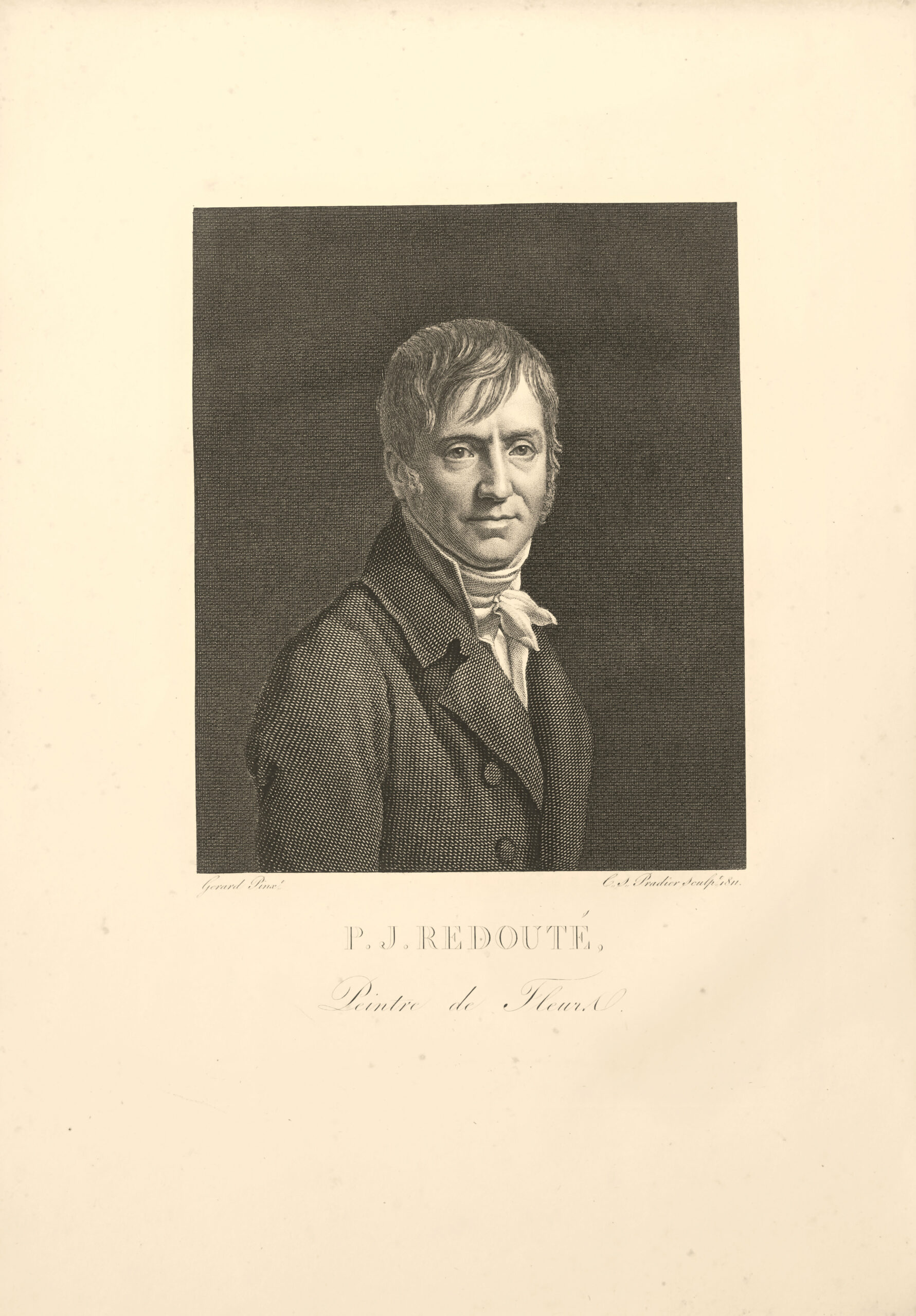Paris, de l’imprimerie de Firmin Didot, Imprimeur du Roi, 1817-1824.
3 volumes folio of I/ 156 pp., 1 portrait out of text, 1 colored frontispiece, 56 color plates, (1) l. of table ; II/ 122 pp., 59 color plates out of text, (1) l. of table ; III/ 125 pp., 54 color plates, (1) p. of errata, (1) l., pale waterstain at the end of volume 3 not affecting the engravings. Red quarter-morocco, flat spines decorated with gilt filets and blind-stamped roulette, large gilt fleurons in the form of roses. Contemporary binding decorated with roses.
368 x 270 mm.
First edition of the legendary book by the man who was known as the “Raphael of Flowers” and one of the most beautiful collections on roses.
Dunthorne 232; Hunt, Redouteana 19; Nissen 1599; Pritzel 7455; Ray, French, 89; Stafleu TL2 9748.
It was published in thirty issues between 1817 and 1824.
Our copy, bound with the portrait of Redouté by Gérard, is illustrated with 170 engravings in colour (169 + the frontispiece) whereas Dunthorne and Nissen announce 168 prints besides the frontispiece. Great Flower Books specifies: “Some copies contain 168 plates, plus the frontispiece”.
This mythical work, one of the most beautiful printed flower books, is also the artistic reference work whose plates were most often reproduced in all important botanical works.
The artistic quality of Redoute’s marvelous drawings is combined with an anatomical science of the flower and a freshness of color that is still unequalled today.
In the introduction to Schutter’s facsimile edition, Sir George Taylor notes Gisele de La Roche’s appreciation: “Redoute and Thory knew, described and figured all the important roses know, in their day. Included were many of the key ancestors of our present day roses. The plates in “Les Roses” have artistic botanical and documentary value, both for the species and cultivars stiel surviving and for those that have disappeared…”
The illustration consists of a portrait of Redouté engraved by Pradier after Gérard, a frontispiece decorated with a wreath of flowers, engraved by Charlin after Redouté, and 169 plates drawn by Pierre-Joseph Redoute, stipple-engraved by Bessin, Chapuy, Langlois, Victor, Lemaire, Charlin and others and printed in colors by Rémond.
Recognized at a very young age for his talent as a painter of flowers, Redouté obtained in 1788 the title of draughtsman of Marie-Antoinette’s Cabinet. Attached during the Revolution to the Museum of Natural History as a botanical draughtsman, he abandoned the gouache used until then for the Museum’s vellum for watercolors. As the drawing teacher of Joséphine de Beauharnais, he was appointed in 1805 “painter of the empress’s flowers” and it was at Malmaison that he executed the first drawings for this work.
To achieve this luxury publication, Redoute used the stipple engraving. Developed around 1785 by Francesco Bartolozzi, whom he had met in London, this technique, both meticulous and tedious, consists of engraving the plate with a multitude of tiny dots. The printer then applies all the inks on the plate, “à la poupée” (the finger surrounded by a strip of cloth), before proceeding to the printing of the plate in a single pass. Each plate is then enhanced with watercolor and sometimes with gum Arabic.
In his foreword, Redouté briefly mentions this process, which he seems not to want to disclose, consisting “in the use of these same colors, on a single plate, by means that are particular to us, and that we propose to publish one day. This is how we managed to give our engravings all the softness and brilliance of watercolor.”
“Redouté’s flowers are admirable at the same time for their perfect accuracy in terms of botanical science, for the brightness of the colors and for the delicacy and lightness of the touch. It was wonderful to see the hands that created these masterpieces” (André De Voes, Biographie de P.-J. Redouté. Ghent, 1873, p. 14).
Roses are classified into three groups: wild roses, known since Antiquity, such as the wild rose and the evergreen rose; medieval roses, such as the white rose and the fetid rose; and finally, more recent roses, created in Redouté’s time from species imported from Asia.
“Les Roses” remains the work of great delicacy and unequalled refinement whose name remains attached to that of the artist.
“So well known that it seems almost superfluous to add any more praise after nearly a hundred and fifty years of honors “ Stafleu.
The folio format of this beautiful edition allows the artist to fully express the sumptuousness and delicacy of these old roses that enchanted the rose gardens of Versailles or Bagatelle.
In 170 prints that compose as many paintings of great refinement, these roses, centifolia, gallica, alpina, multiflora, indica, rubufolia, whose exquisite hues have been enhanced with watercolors under Redouté’s eyes in magnificent and subtle colors, from the most delicate pink to the warmest carmine or purplish purple, come to life.
A precious copy, complete with 171 prints in sumptuous contemporary colors. During the last 25 years three other quality copies are listed on the market:
1/ Sotheby’s, 15 March 2000, lot 67: « contemp bds, edges uncut ; vorn, spines discolored & chipped, covers spotted. With port, engraved frontis & 169 plates ptd in colors & finished by hand. Some spotting, mainly to text.
L.p. copy measuring 555 mm by 350 mm. £276,500 ($440,000 avec frais).
2/ Piasa, 5 December 2009. 170 engravings out of 171, without the portrait. 367 x 270 mm.
Scratches to the binding. Spotting in the margins of several text leaves, light foxing on the frontispiece. A plate a bit damaged in the margin on 0,5 cm et some marginal tears restored on 1 to 2 cm to 2 plates in black and 3 in colors.
Suite of engravings in two states : 223 056 €.
3/ Sotheby’s New York, 18 June 2004 ; complete, with the engravings in two states. « Contemp half mor gilt ; extremities worn, part of spine of Vol I detached. With port, engraved frontis & 169 plates ptd in colors & finished by hand & with a 2d suite of plates in black on ochre paper. Mainly marginal spotting & foxing. (Sotheby’s New York, June 18, 2004, lot 324, $390,000).
Superb copy, one of the last recorded with bindings decorated with gilt roses.
